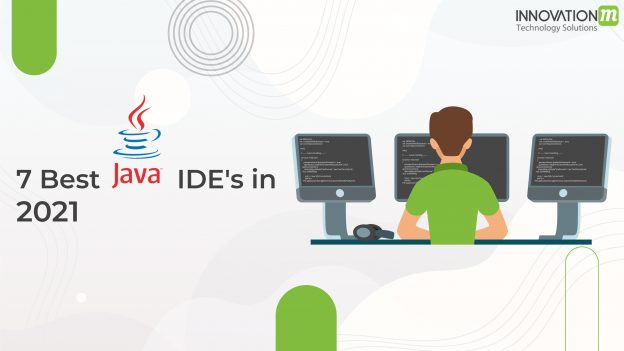When we mention common programming languages, it’s necessary to remember Java! Actually, it’s the most common programming language in the world with around seventy lakh Developers using it Regularly. One among the explanations for this can be the versatile nature of Java. Be it desktop apps, mobile apps, or web applications, you name them and Java will produce them!!!
Because of this quality, Java has several IDE’s that you just will use. These IDE’s or Integrated Development The environment offers large facilitation within the application development method. By using them, you’ll save time and energy further to produce a typical development method in your team or company. whereas the most common Java IDE’s within the world are Eclipse, IntelliJ plan, NetBeans, etc. there are several alternative IDE’s that you just will use consistent with your specifications.
1 Eclipse
Eclipse may be a Java IDE that’s one of all the three biggest and preferred IDE’s within the world. it absolutely was written mostly in Java however it may be used to develop applications in alternative programming languages apart from Java using plug-ins.
Eclipse is used on different platforms like Linux, macOS, Solaris, and Windows.
It is also used for developing various mathematical documents with LaTeX using the TeXlipse plug-in as well as packages for the Mathematical software. Plugin Development Environment is Present in Eclipse for Java programmers that want to develop specific functionalities in their applications.
Eclipse is a most powerful tool for the various processes in web appl development and mobile app development such as charting, modeling, reporting, testing, etc.
2 BlueJ
BlueJ could be a Java IDE that’s widely utilized by Java programmers within the world. whereas it had been originally developed for academic functions, it’s also helpful in software package development, though on a smaller scale. BlueJ is also used on platforms like Linux, macOS, and Windows.
All the OOPS elements like classes, objects, etc. We can be easily represented on BlueJ in a visual format using a diagram similar to UML(Unified Modeling Language).
The front or main screen of BlueJ shows the class structure of the present development application where objects can easily modify and access. It’s a little bit different from other IDE’s. So the User interface of BlueJ is clean and easy to use.
3 IntelliJ IDEA
IntelliJ IDEA may be a Java IDE that’s one in every of the 3 biggest and preferred IDE’s within the world. It has two versions, specifically the free open-source community edition and a paid ultimate edition. We can use IntelliJ on many platforms like Linux, macOS, and Windows.
Other tools that are only offered in the paid Ultimate version are duplicate detection, JavaScript and database tools, Perforce integration, etc.
There are many different features in IntelliJ IDEA that make programming simple such as debugging, code completion, code inspections, XML editing support, code refactoring, unit testing. IntelliJ IDEA supports various programming languages like Scala, Kotlin, Groovy, Java, etc.
4 NetBeans
NetBeans may be a Java IDE that’s one among the three biggest and preferred IDE’s within the world. This is often an associate degree open-source IDE that enables Java programmers to create various applications exploitation module sets. This IDE is used differently on platforms like Linux, macOS, Solaris, and Windows.
While NetBeans is primarily a Java IDE, it has extensions for working in other programming languages such as C, C++, PHP, HTML5, JavaScript, etc.
With the use of NetBeans, the creation of custom software is a very easy process now. NetBeans is also used for writing bug-free code
It is available for different operating systems like Windows, Linux, macOS, Solaris, etc.
5 MyEclipse
MyEclipse is a Java IDE that’s built on the Eclipse platform and offers a special feature set. its fifth editions, particularly a professional Edition, Standard Edition, Blue Edition, and many Editions.
MyEclipse is used on platforms like Linux, macOS, and Windows.
MyEclipse provides some other features for mobile application and web development like Maven project management, Swing GUI design support, Spring Tooling, WebSphere connectors, database connectors, and many more. It also provides support for web languages and frameworks like HTML, JavaScript, Angular, etc.
MyEclipse provides Many tools Like database tools, persistence tools, visual web designers, Spring tools, etc. which are used for Java application development and web development as well.
6 JDeveloper
JDeveloper is available for Java Developers which is provided by the Oracle Corporation. This IDE is used in web and mobile application development in different languages apart from Java such as XML, HTML, SQL, PL/SQL, etc.
JDeveloper can run on different platforms also like Linux, macOS, and Windows.
JDeveloper can combine with the Oracle Application Development Framework which is an end-to-end Java EE-based framework. That makes the application development process much easier.
It also simplifies the application development procedure by providing many visual development tools for applications along with all the tools needed to create an advanced coding environment. It provides various features for the entire development lifecycle of an application which is designing, coding, debugging, optimizing, deploying, etc.
7 Greenfoot
Greenfoot is a Java IDE that was developed for providing education to high school and college students. It’s a free software package. which is maintained by Oracle.
Linux, macOS, Solaris, and Windows support the Greenfoot IDE for Application Development.
Easy access to animation and sound. It has the ability to display many different OOPS features such as class & object relationships, methods, object interactions, and parameters, etc. 2D graphical applications can be easily developed using Greenfoot, Main examples of these are simulations and interactive games, etc.
 End to End Technology Solutions
End to End Technology Solutions
